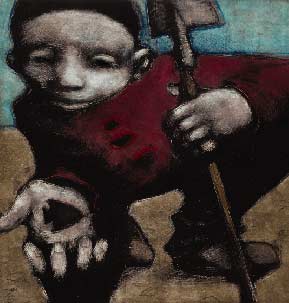 | |
|
Dig This GETTING THE DIRT ON CANADA'S FIRST PEOPLES
Officially, Burgar is supervisor of the joint York University/Toronto Regional Conservation Auth-
ority's archaeological digs. While he's employed by the TRCA, the York geography grad is also course director for York's archaeological field school, a full-credit course that students complete in an intensive four
weeks.
Last summer they excavated the Lost Brant site near Lake Wilcox, but each year York students help excavate another important site known as Seed-Barker, south of Kortright Conservation Area on an upper branch
of the Humber River. Sites' ages range from about 10,000 BC to 500 AD
The TRCA's role is to preserve sites in the ground, says Burgar, not dig them up. "You might think as an archaeologist that I'd be doing the opposite - but my job is to identify and document our cultural resources.
We only excavate if we're in danger of losing it to housing or a road."
For Burgar, and York archaeology students, their work is a glimpse into a way of life long disappeared. "What we have here is a record of 10,000 years of human culture."
Dig illustration: Ryan Price |
|
Text Menu [ Home | Past Issues | Subscriptions | Contact Us | Site Map | Search Profiles ] |
